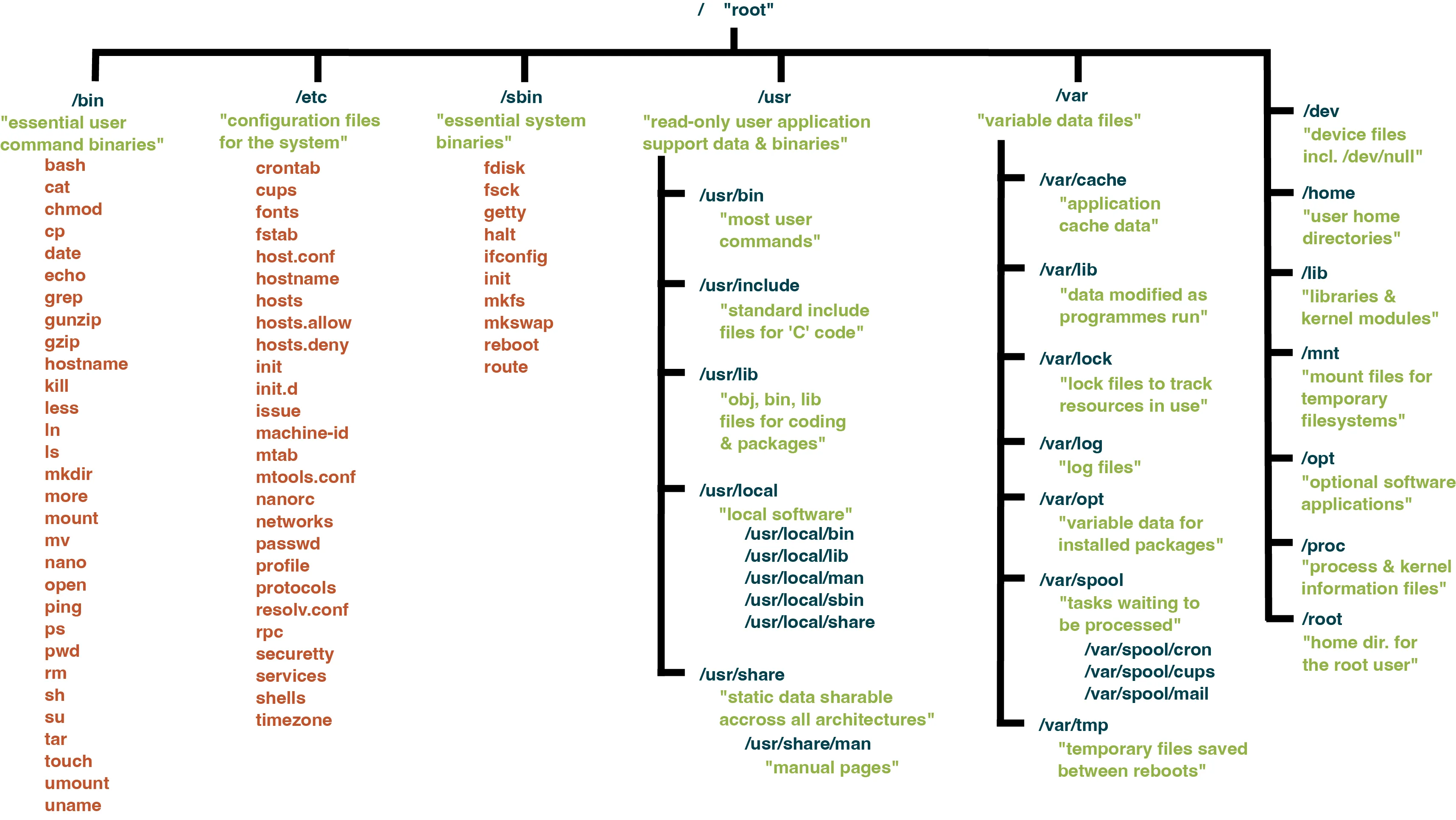Directories, links, and role-based access Control
Key concepts
Directories

-
remember, everything is a file
-
this means a directory entry is a file
- the data in the file is the file system data for the sub-directories and files in that directory
- the meta-data for the directory entry are the permissions data, a flag indicating this is a directory, and a pointer to the data block
- the directory entries always include ”.” meaning this directory, and ”..” meaning the parent directory
-
permissions for directories include:
- r: you can list the contents of the directory — view the
dir-entriesfor that directory - w: you add edit directory content, meaning alter
dir-entries, such as creating, moving, or deleting files — requires x permission too - x: you can traverse and search the directory, e.g. using the
findcommand - t-bit: prevent deletion or renaming of files owned by other users
- r: you can list the contents of the directory — view the
-
See Figure 5.6, page 140 to understand the UNIX directory structure
-
see Figure 5.7, page 142 to understand the distinction between the mental model of a file system and its implementation
-
a chroot jail limits visibility of the file system using
chroot
Links
- a hard link is a direct alias to a file — the
dir-entrypoints to the same file object - a symbolic link is a n indirect alias to a file — the
dir-entrypoints to an inode whose datablock contains the pathname of the original file - see Figure 5.8, page 143
- some important differences, see Figure 5.9, page 143
- experiment with these!
Role-based access control (RBAC)
- assign permissions to objects (files) based on roles
- if a person/subject changes roles, they get new access by being granted that role or can lose access by having a role removed
- can be much easier than having to change permissions for individual files each time people change roles
Mandatory access control and SELinux
- useful for organizations or the government — who you are determines which files you have access to, and this is controlled by an administrator, e.g. a security clearance
- SELinux is a Linux Security Module that provides mandatory access control for Linux
- demonstrates that you can take a commodity operating system and provide mandatory access control
- originally developed by the NSA
- integrates role-based access control